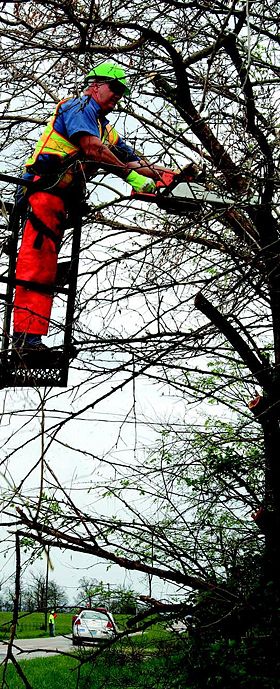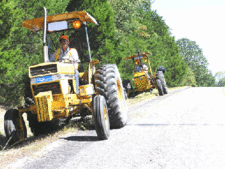Difference between revisions of "821.20 Woody Plant Control"
m (minor correction) |
m (article construction) |
||
| Line 103: | Line 103: | ||
:b. High temperatures and drought conditions can lessen effectiveness | :b. High temperatures and drought conditions can lessen effectiveness | ||
| − | :c. 2,4-D products are not to be applied in temperatures above | + | :c. 2,4-D products are not to be applied in temperatures above 70° |
'''D.''' Clean-up and Disposal | '''D.''' Clean-up and Disposal | ||
Revision as of 08:23, 29 May 2009
Definition: The control of undesirable trees, shrubs, sprouts and tree limbs. Also referred to as brush control.
Why:
1. Reduces need for frequent mechanical removal
2. Efficient way to control spread of undesirable woody plants
Primary Targets:
1. Cut stump – sprout regrowth
2. Areas containing invasive woody growth
3. Areas where woody vegetation is creating a sight distance hazard
4. Highway sign clearance
5. Clear zone – same definition as vegetation policy
6. Side trimming to reduce shading
Methods:
A. Calibration
Most products applied with handgun or backpack sprayer (see section on calibration of handgun sprayers)
B. Recommended products and rates
Table 821.20.1 Recommended Products and Rates for Mowed Areas
| Herbicide | Broadcast Rate | Handgun Rate | Comments |
|---|---|---|---|
| Garlon 3A or Tahoe 3A | 2 qt. per acre | 2 qt. per 100 gallons | Spray to wet. |
| Pathfinder II | - | Ready to use | Used as a basal stem treatment, bottom 12 in. of trunk |
| Escort (requires continuous agitation) | - | 1.5 oz. per 100 gallons | 2 oz.per 100 gallons for cedars. Spray to wet. |
Table 821.20.2 Recommended Products and Rates for Areas Not Mowed
| Herbicide | Broadcast Rate | Handgun Rate | Comments |
|---|---|---|---|
| Pathfinder II | - | Ready to use | Used as a basal stem treatment, bottom 12 in. of trunk |
| Krenite S | - | 2 gallons per 100 gallons and 4 oz. sodium gluconate | Used at 100 to 300 psi. Dormant oil can be added for improved results. |
Table 821.20.3 Recommended Products and Rates for Cut Stumps or Surface Treatment
| Herbicide | Broadcast Rate | Handgun Rate | Comments |
|---|---|---|---|
| Pathfinder II | - | Ready to use | Used as a basal stem treatment, bottom 12 in. of trunk |
| Tordon RTU or Pathway | - | Undiluted | Apply only to cut surfaces. |
| Glyphosate | - | 1 part water per 1 part Glyphosate | Apply only to cut surfaces. |
| Krenite | - | 1 part water per 1 part Krenite | Apply only to cut surfaces. |
C. P.P.E.
Follow manufacturer’s label recommendations
D. When to apply
- a. Krenite should be applied from mid through late summer (before fall color change)
- b. Other foliar applied chemicals can be applied throughout the growing season however high temperatures and drought can reduce effectiveness
- c. Basal bark applications can be effectively applied as a dormant season treatment
- d. Cut stump treatments need to be applied shortly after cuts are made (within 15 to 30 minutes) to be effective and only to the outer edge of the cut surface
Special Recommendations:
A. Read the label
B. Location Concern
- a. No applications over rivers, streams, or ponds
- b. Avoid treatments near desirable woody vegetation
- c. Avoid treatments near crops
- d. Do not mow or trim vegetation treated with Krenite for one year after application
C. Weather
- a. Since applications sometimes are made up into tall vegetation, spraying during very low wind conditions is essential
- b. High temperatures and drought conditions can lessen effectiveness
- c. 2,4-D products are not to be applied in temperatures above 70°
D. Clean-up and Disposal
- a. Follow label recommendations for disposal of unused product
- b. Escort requires constant agitation; no mixed product should be left in the tank
E. Mode of Action
- a. Systemic herbicides (2,4-D) are absorbed through leaf tissue and translocated through the plant
- b. Non-systemic herbicides (Krenite) control the vegetation only where applied
- c. Basal bark treatments are absorbed through the bark. They are only effective on thin barked, mostly young trees
- d. Cut stump treatments are carried through the exposed vascular system into the roots

